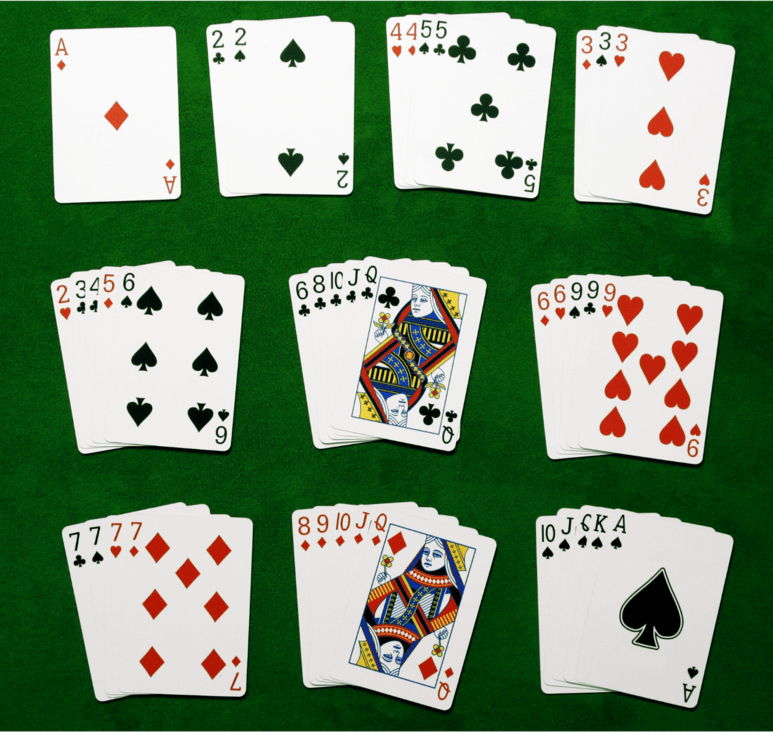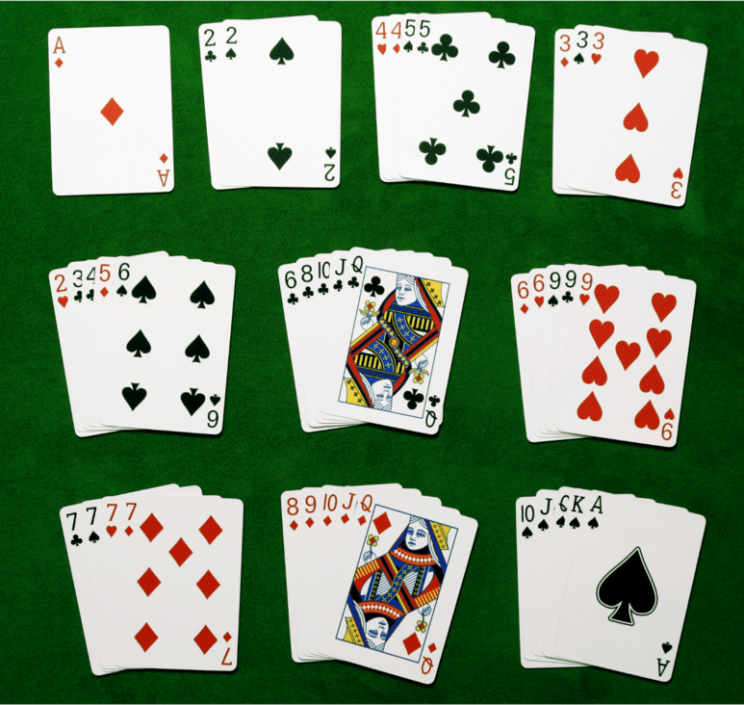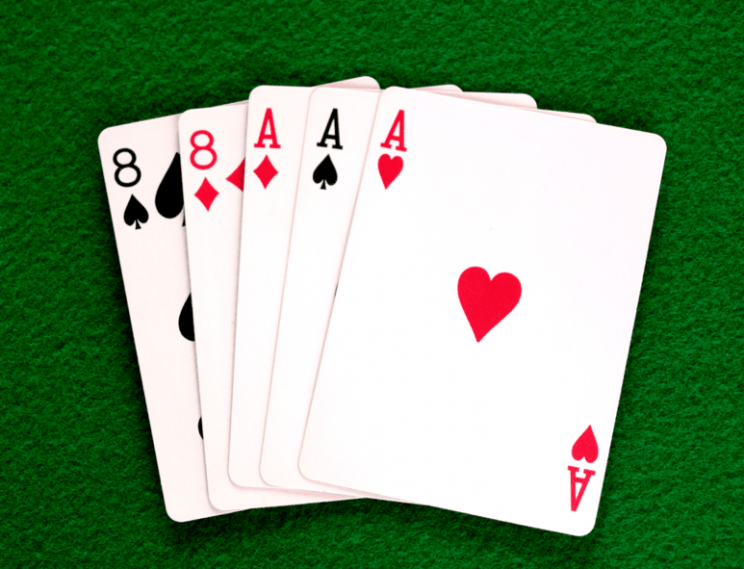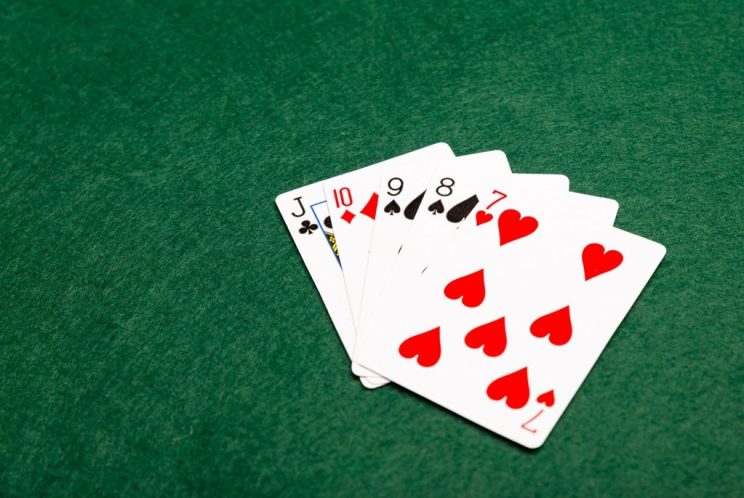
德扑大小:扑克手牌排名图表
线上扑克的兴起使这项游戏更加贴近人们,并让全球玩家更容易参与。只需点击或轻触两下,就可以进入一张数字扑克桌,与真人玩家竞技,甚至使用真钱较量。
此外,越来越多关于扑克的资源与教育内容,可以帮助新手成为不错的玩家,并让普通玩家成长为能在最高水平比赛中竞争的世界级职业高手。
为什么开始玩扑克?
扑克的发展不仅体现在玩家数量的增长上,质量也得到了显著提升。如今,扑克比以往任何时候都更令人兴奋且富有竞争力,但新玩家以及那些还未尝试过扑克技能的人,千万不要因此却步。目前提供扑克游戏的网站和应用选择非常广泛,每个人都可以找到适合自己经验和游戏知识水平的平台。
这同样适用于完全的新手。如今,扑克已成为世界各地许多人谋生和娱乐的来源,因此花些时间学习游戏规则是非常有意义的。不过,如果你决定开始,必须找到一个合适的起点。
而最好的起点,就是先熟悉扑克手牌排名。

扑克手牌强度图表
时至今日,扑克已经衍生出无数类型,每次出现新玩法都让人眼花缭乱。而由于游戏本身的特性,未来只会有更多变化和创新。
此外,每种类型的扑克还可以用不同的方式进行,比如不同的注额限制、玩家手牌数量的变化,或者其他可以在游戏开始前自行决定的细节。
然而,在绝大多数扑克类型中,手牌排名规则都是相同的。同时,在大多数扑克游戏中,目标是组合出 5 张最强的牌——有时你只能拿到 5 张牌,而有时可能会拿到 7 张、8 张甚至更多,但最终都只需要选出 5 张最佳手牌。
现在,让我们来详细看看从最强到最弱的手牌排名吧。
皇家同花顺
扑克中最强的手牌是皇家同花顺。这表示你的5张牌是同一花色的最高5张牌。例如,10♥、J♥、Q♥、K♥、A♥,这样的组合就是皇家同花顺。由于扑克有四种花色,因此理论上有4种可能的皇家同花顺组合。
扑克中的花色没有高低之分,无论是梅花、红心、方块还是黑桃,都具有相同的价值。然而,凑齐任意一种皇家同花顺的概率极低。
在5张牌游戏中,抽到皇家同花顺的概率为649,379比1;而在7张牌游戏(包括德州扑克这种最受欢迎的扑克版本)中,概率稍微高一点,为30,939比1。尽管如此,在任何扑克变体中,皇家同花顺都是非常罕见的手牌。

同花顺
同花顺也是非常难凑齐的手牌。同花顺指的是将5张同一花色的牌按顺序连接起来,但不要求必须是牌面最大的5张。从某种意义上来说,皇家同花顺是同花顺的最佳版本。
只要你抽到任意5张同花色且相邻的牌,就形成了同花顺。例如,3♦、4♦、5♦、6♦、7♦ 或 8♠、9♠、10♠、J♠、Q♠ 都是同花顺的例子。
如果两位或更多玩家都有同花顺怎么办?在这种情况下,比较最大的牌(高牌)来决定胜负。在上述例子中,方块同花顺的最大牌是7,而黑桃同花顺的最大牌是Q。由于Q比7大,因此拥有黑桃同花顺的玩家获胜。如果极为罕见地出现两位玩家拥有同样高牌的同花顺,那么底池将在这两位玩家之间平分。
四条
虽然扑克中常见的描述是“四张A”是最强的手牌之一,但其实它只是第三强的手牌。四条指的是你手中有4张同点数的牌。例如,5♣、5♠、5♦、5♥,或 6♣、6♠、6♦、6♥ 等等。
同样地,如果有两位或更多玩家凑齐了四条,那么胜负取决于牌的点数。比如,6会赢过5,Q会赢过J,并且不可能出现两位玩家拥有相同点数的四张牌。如果真的发生了,那么你可能需要检查一下使用的牌组或玩家的袖子里有没有问题。
这是第一种不是所有5张牌都用来形成手牌的组合。剩下的一张牌,以及任何未连接到手牌的牌,被称为“踢脚牌”(kicker),在某些情况下,它会成为最终的平局决定因素,但我们稍后会详细说明。在四条的情况下,第五张牌是完全无关紧要的。
葫芦
接下来是葫芦,这是另一种需要使用所有5张牌的手牌。要组成葫芦,你需要连接3张相同点数的牌,以及另外2张相同点数的牌,但这两张牌的点数必须不同于前三张牌(反正也不可能一样)。听起来可能有点混乱,但实际上非常简单。
葫芦的例子包括:4♣、4♠、4♦、J♥、J♦,或10♦、10♠、10♥、7♣、7♦。如果多位玩家凑齐了葫芦,首先应该比较谁拥有最高点数的三条。例如,在这个例子中,拥有10和7的玩家胜出,因为10比4大。
在5张牌游戏中,两位玩家不能拥有相同的三条。然而,在某些其他变体中,当有更多牌时,两位玩家有可能拥有相同三条的葫芦。这种情况下,我们会比较剩余的对子。比如,在玩家A拥有8、8、8、5、5,玩家B拥有8、8、8、K、K的情况下,玩家B胜出,因为K比5大。
你甚至可能遇到两位拥有完全相同葫芦的玩家。在德州扑克中,举例来说,玩家A和B都可能手中持有9点,并且在公共牌上抽到9、9、4、4,这样他们两人都拥有9和4的葫芦。因此,两位玩家将平分底池。

同花
为了更容易记住同花和顺子的区别(我们稍后会介绍顺子),可以这样记:同花顺是由这两者组成的。首先,同花(Flush)代表的是5张同一花色的牌。
例如,3♥、5♥、8♥、J♥、A♥ 就是同花,2♠、7♠、J♠、Q♠、K♠ 也是同花。正如之前所提到的,所有花色的强度是相同的。但如果有多位玩家拥有同花,胜负将由最大的高牌决定。所以,在上述两个例子中,红心同花胜过黑桃同花。
如果最大牌相同,那么接下来会比较第二大牌。例如,若玩家A手中拥有2、6、8、10、Q,玩家B手中拥有3、4、6、7、Q,那么玩家A会获胜,因为10比7大。如果第二大牌也相同,那么我们会比较第三大牌,以此类推。
如果两位玩家的牌完全相同,那么底池会平分给他们。
顺子
正如我们刚才提到的,同花顺的第二个元素显然就是顺子。顺子指的是当玩家拥有5张任何花色的牌,且这些牌按顺序排列时,就形成了顺子。
例如,若玩家手中有3♥、4♦、5♥、6♠、7♣,或是10♠、J♣、Q♣、K♦、A♥,那么他拥有顺子。根据之前的例子,你应该可以猜到决定胜负的方式。当然,就是最大牌,所以在上述的例子中,拥有A作为高牌的玩家获胜。如果最大牌相同,那么其他牌必然也会相同,这样底池就会平分。
在5张牌的游戏中,抽到顺子的概率是253比1。然而,在有更多牌的变体中,顺子的概率会显著增长,在某些扑克版本中,如奥马哈扑克(Omaha),顺子会变得相当常见,并且对玩家的整体策略起着重要作用。

三条
连接三条的规则非常简单——你只需要拥有3张相同点数的牌。例如,8♠、8♦、8♥,或者A♦、A♣、A♠,或任何类似的组合。
当两位或更多玩家拥有三条时,决定胜负的规则同样简单明了。拥有最大点数的三条的玩家获胜——在上述例子中,三条A赢过三条8。
你可以轻易地看到,拥有三条的玩家还有两张未连接的牌,这些牌决定了当更多玩家拥有相同点数的三条时,谁是获胜者。如我们所提到的,这些未连接的牌被称为踢脚牌(kicker),它们会在这些情况下决定胜负,我们会稍后详细解释。
两对
两对的概念也相当简单。当玩家拥有两对相同点数的牌时,就有了两对。显然,这两对牌必须是不同的,否则玩家将拥有四条。
例如,玩家持有4♣、4♦、7♥、7♣,或9♣、9♥、Q♦、Q♥,或任何类似的组合。在多位玩家拥有两对时,决定胜负的依据是最大的对子。在这个例子中,最大的对子是7和Q,所以持有Q的玩家获胜。
当两位玩家拥有相同的最大对子时,我们会检查次大的对子。例如,若玩家A拥有6、6、J、J,玩家B拥有10、10、J、J,那么玩家B会赢得底池。如果两位玩家的两对牌完全相同,那么由剩余的踢脚牌来决定胜负。
一对
扑克中最弱的连接手牌是一对。任何两张相同点数的牌都被视为一对——例如4、4,7、7,或A、A,等等。当两位或更多玩家拥有一对时,拥有最大点数对子 的玩家获胜。
在5张牌游戏中,抽到一对的概率相当高——约为2.36比1。有趣的是,在牌数更多的变体中,抽到一对的概率通常比没有连接到任何牌的概率还要高。
高牌
然而,也有一些情况是玩家完全没有任何有效牌。这种情况在7张牌游戏中大约只会出现1次于4.74局,但确实会发生。当所有剩余的玩家都处于这种情况时,获胜者是拥有最大高牌的玩家。如果这些玩家的高牌相同,我们会比较第二大牌,如果还无法决定,则比较第三大牌,依此类推。
踢脚牌
最后,我们来谈谈踢脚牌,它们是最终的平局决定因素。踢脚牌是指未连接的牌,它们会在没有其他方式决定胜负的情况下发挥作用,基本上它们的运作方式与高牌规则相同。
假设玩家A和玩家B拥有以下手牌:
A: K, K♥, 7♦, 7♣, Q♦
B: K♠, K♣, 7♥, 7♠, 5♠
如你所见,两位玩家都有一对K和一对7,无法从这些牌中区分谁更强。在这种情况下,胜者是拥有较高踢脚牌的玩家,这里是玩家A,因为他拥有Q作为踢脚牌。如果两位玩家拥有相同的踢脚牌,那么底池将会平分。
然而,当有多张踢脚牌时,情况会稍微复杂一些。如果最高踢脚牌相同,则会考虑第二高踢脚牌。例如:
A: 9♠, 9♦, K♦, 10♠, 4♣
B: 9♣, 9♥, K♥, 8♦, 5♣
两位玩家都有一对9和K作为最高踢脚牌,但玩家A赢得底池,因为他拥有第二高的踢脚牌。当然,如果第二张踢脚牌相同,那么第三张踢脚牌将决定胜负,如果两位玩家的手牌完全相同,则底池会平分。
扑克牌的替代排名
值得一提的是,在某些扑克牌类型中存在替代排名系统,但它们通常还是基于我们描述的排名系统。
例如,低牌扑克基本上是将这个系统颠倒过来。在不同版本的低牌扑克中,玩家需要拥有最弱的手牌才能赢得底池。具体的规则和细节可能会有所不同,但大致上是这样的。
还有一些扑克类型采用了高低分配系统,在这种系统中,底池的一半由拥有最强手牌的玩家获得,另一半则由拥有最弱手牌的玩家获得。这为游戏增加了一个额外的维度,尤其是在那些可以选择更多牌的扑克版本中,比如奥马哈扑克。
我们会在未来的文章中更多地探讨这些替代排名系统。
我们希望这篇文章帮助你从基础层面了解扑克的运作,并让你对这个美丽的游戏更加接近。当然,要真正熟悉扑克,不仅仅是学习基本的手牌排名,但这无疑是个好的开始。
如果你对扑克产生了兴趣,那么深入了解并持续学习是非常有意义的,你可以在我们的博客中依靠相关资源来帮助你。在学习过程中,花些时间好好研究游戏,当你觉得准备好时,可以在Coinpoker注册并开始游戏!

















